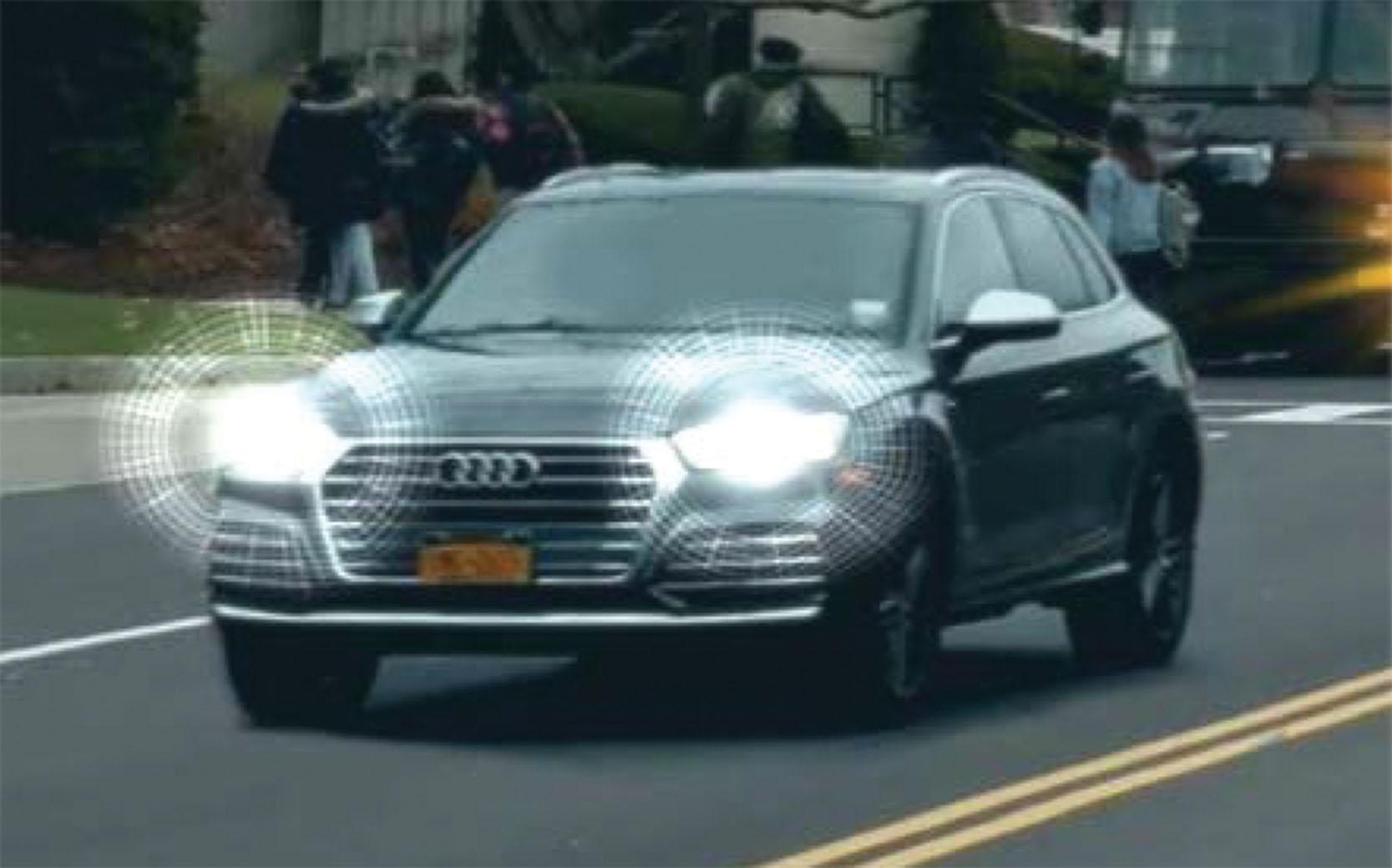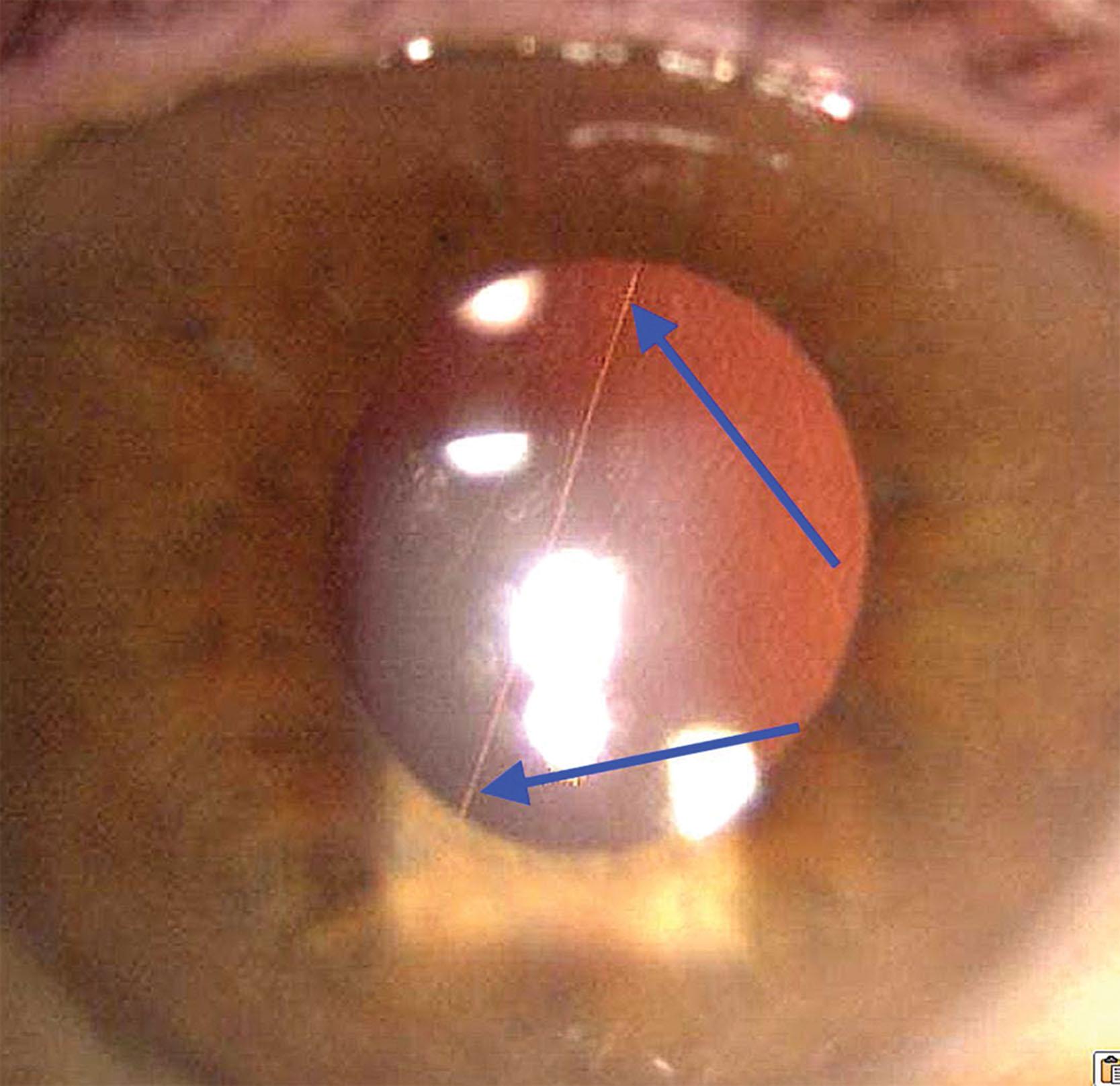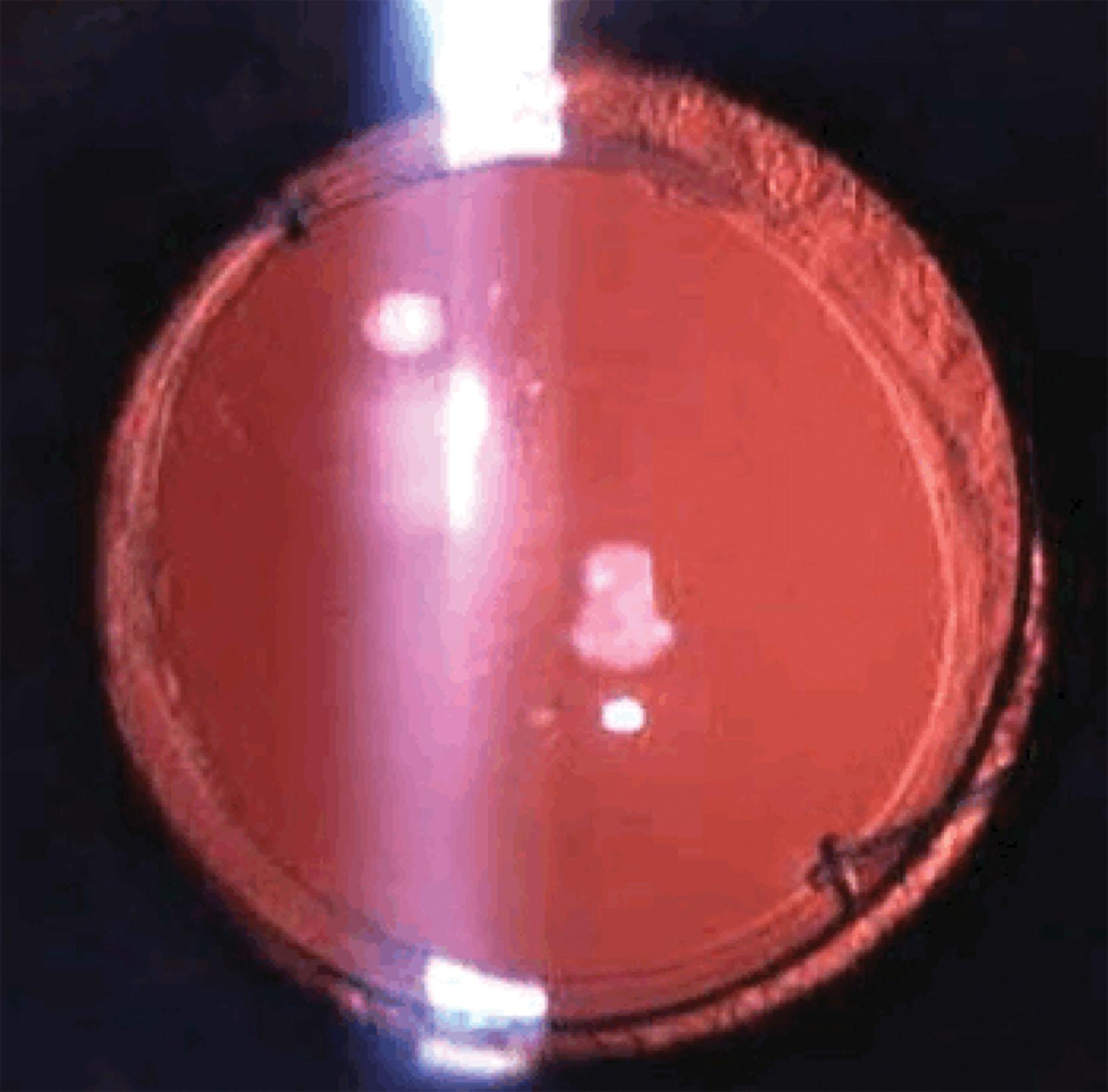Physical Address
304 North Cardinal St.
Dorchester Center, MA 02124
Dysphotopsias (positive, negative, and diffractive optic) represent undesirable subjective optical phenomena that may occur after uncomplicated, seemingly “perfect” cataract surgery.
They are, in part, related to IOL design and IOL position.
Positive dysphotopsia (PD) is described by patients as light streaks, light arcs, flashes, and starbursts that are all induced by an external light source.
Negative dysphotopsia (ND) is manifest as a temporal arc-shaped or linear dark shadow that is typically stimulated by temporally oriented light sources ( Figs. 55.1–55.3 ).



Diffractive optic dysphotopsia (DD) relates to the better understood optical side effects of diffractive optic rings and the splitting of light energy ( Fig. 55.4 ).

Because the varying dysphotopsias seemingly have different causes, patients may experience more than one type; a given patient may experience all three types.
It has been suggested that dysphotopsia is a leading cause of patient dissatisfaction after cataract surgery, as reported by Tester et al. Indeed, they indicated that 49% of their cases had some form of dysphotopsia after surgery, and Bournas et al. reported that 19.5% of patients complained of dysphotopsia on the first postoperative day.
Positive dysphotopsia (PD) is described by patients as light streaks, light arcs, central flashes, and starbursts that are induced by an external light source ( Fig. 55.2 ).
PD must be distinguished from entoptic light flashes caused by vitreoretinal traction, noted under dark conditions, whereas PD requires an external light source as a stimulus in order to be realized by the patient.
Also, PD must be distinguished from a Maddox rod effect that is caused by posterior capsule striae and generated by a point source of light; this condition may be managed by Nd:YAG laser posteriorly capsulotomy as indicated by patient symptoms ( Fig. 55.5 ).

The etiology of PD is reasonably well understood, given good correlation between the optical laboratory and the clinical findings. IOL edge design, index of refraction of the optic material, and overall optic design have all been implicated as causative factors. Truncated or square edge design of ovoid intraocular lenses (IOL) was first reported as a source of undesired optical images by Masket et al. They used ray tracing and reflectometry to demonstrate that light of oblique incidence (between 40 and 70 degrees) may strike the truncated square edge of the IOL and reflect onto the retinal surface, inducing PD symptoms. In the era before foldable IOLs, rigid PMMA (poly methyl-methacrylate) was essentially the only IOL optic material available, and oval PMMA IOLs were manufactured by truncating parallel edges of a round optic, reducing the diameter in one meridian (from 6.0 to 5.0 mm) so that the IOL could be implanted through a smaller incision. The Masket et al. investigation found a nearly 4-fold greater likelihood for PD symptoms with oval versus round IOLs, owing to the squared edge of the truncated side of the optic. Supporting this finding, the work of Holladay revealed that square-edged IOLs concentrate stray light into an arc that is projected onto the retina opposite the image of the light source, while round-edged IOLs disperse stray light over a larger portion of the retina, thus reducing PD symptoms. Franchini et al. also found that square edge design is associated with halos, rings, and arcs of light, and they suggested that rounding the anterior edge of a square-edged IOL could be beneficial. All of that stated, the square edge of an IOL can have a significant impact on the retardation and/or reduction of PCO, as the posterior square edge of the optic inhibits lens epithelial cell migration from the equator of the capsule bag onto the posterior capsule ( Fig. 55.6 ). As such, it is unlikely that square edge design will be removed from the marketplace, despite its causal relationship to PD.
In addition to the square edge of the optic, existing evidence also implicates high index of refraction (I/R) of the IOL optic material as another cause for PD.
This is particularly true if the optic is designed with a relatively flat anterior radius of curvature as has been reported by Erie et al. Their work revealed that high I/R when combined with a flat anterior radius of curvature was a key cause of patient-reported central light flashes from reflection off the back of the flat anterior surface of the optic.
Other authors found that PMMA IOLs and round-edge silicone IOLs were associated with a decreased incidence of PD.
These studies also suggest that square edge design is associated with a higher incidence of PD irrespective of IOL material.
I/R also plays a major role in the reflectivity of the optic material, impacting both patient symptoms and the “cat’s eye” phenomenon of an accentuated 3rd Purkinje image from the anterior surface of the IOL.
Table 55.1 lists the material, I/R, and design of several IOLs in use in the United States that are associated with PD.
| PCIOL | IOL Material | Manufacturer | Refractive Index | Edge Design |
| ZCBOO | Hydrophobic acrylic | Johnson & Johnson | 1.47 | Frosted, posterior square edge |
| ZCTXXX | Hydrophobic acrylic | Johnson & Johnson | 1.47 | Frosted, posterior square edge |
| ZMBOO | Hydrophobic acrylic | Johnson & Johnson | 1.47 | Frosted, posterior square edge |
| ZKBOO | Hydrophobic acrylic | Johnson & Johnson | 1.47 | Frosted, posterior square edge |
| ZXTXXX | Hydrophobic acrylic | Johnson & Johnson | 1.47 | Frosted, posterior square edge |
| ZXROO | Hydrophobic acrylic | Johnson & Johnson | 1.47 | Frosted, posterior square edge |
| SN60WF | Hydrophobic acrylic | Alcon | 1.55 | Square edge |
| SN6ATX | Hydrophobic acrylic | Alcon | 1.55 | Square edge |
| SN6AD1 | Hydrophobic acrylic | Alcon | 1.55 | Square edge |
| Softec HDO | Hydrophilic acrylic | Lenstec | 1.43 | Square edge, oval optic |
| Akreos AO60 | Hydrophilic acrylic | Bausch & Lomb | 1.6 | Square edge |
| CZ70BD | PMMA | Alcon | 1.49 | Round thin |
| AQ2010V | Silicone | Staar Surgical | 1.41 | Round edge |
| L161AO | Silicone | Bausch & Lomb | 1.41 | Square edge |
| ZA9002 | Silicone | Johnson & Johnson | 1.46 | Rounded anteriorly, square posteriorly |
| Crystalens | Silicone | Bausch & Lomb | 1.43 | Square edge |
| CC4204A | Collamer/Copolymer | Staar Surgical | 1.44 | Plate haptic |
| CQ2015A | Hydrophilic acrylic/Copolymer | Staar Surgical | 1.45 | Rounded anteriorly, square posteriorly |

Given a good overall understanding of the causes, the ophthalmic IOL industry has addressed PD by rounding the anterior portion of the optic’s edge, reducing square-edged IOL thickness, leaving the IOL edge unpolished, and moving the IOL optical power more to the anterior rather than the posterior optic. Although these logical improvements have helped, the incidence of PD is still significant in large part because of the square edge of the optic. Unless and until better means for preventing or retarding PCO are developed, PD will persist as an undesired subjective postsurgical phenomenon.
Although not well studied, unlike ND (see below), it appears that there is no meaningful neuro-adaptation to PD, and highly symptomatic cases require treatment in some fashion. Conservative management methods for PD include correction of any refractive error, treatment of any coexisting ocular surface disease, treatment of posterior capsule opacification (PCO), and pharmacologic miosis. The latter may be accomplished with pilocarpine 0.5% or brimonidine 0.15%. Regarding PCO and laser capsulotomy, the clinician must be certain that the posterior capsule is the offending agent; otherwise its opening could complicate future attempts at IOL exchange, should it be necessary.
As a rule of thumb, if the patient was asymptomatic early after surgery (perhaps other than the Maddox rod effect) and developed symptoms later as PCO evolved, capsulotomy may be helpful.
On the other hand, if the patient was symptomatic with PD immediately after surgery when the capsule was clear, it is unlikely that capsulotomy will improve PD symptoms.
Moreover, posterior capsule openings, once made, should be generous in size, as the edges of a small capsulotomy can be the source of additional light induced symptoms, particularly at night.
Should conservative measures fail and patients remain significantly symptomatic, IOL exchange can be considered as the most definitive step (see below).
Become a Clinical Tree membership for Full access and enjoy Unlimited articles
If you are a member. Log in here